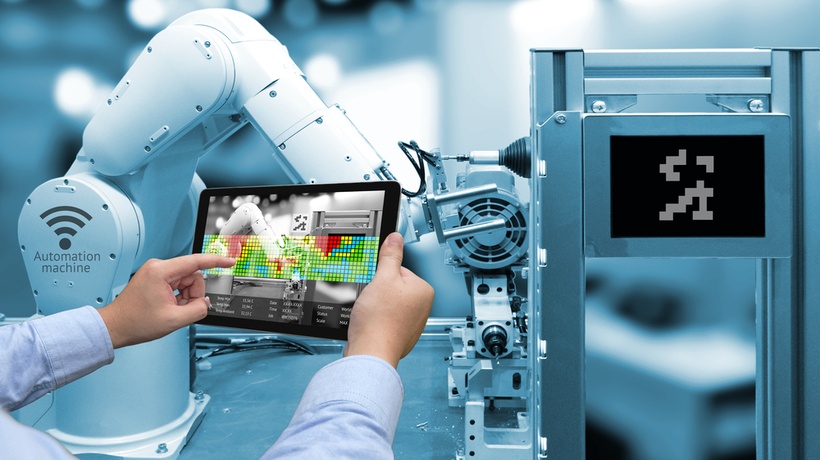Discover How Manufacturing Industries Are Using AR/VR/MR eLearning Solutions
To elaborate, AR/VR/MR eLearning solutions encompass everything the workforce has to learn in order to deal with industrial working environments (e.g., Artificial Intelligence, robotics, AR/VR/MR technologies hardware, and software) to create inspiring and innovative product designs.
How AR/VR eLearning Solutions Help In The Understanding Of Complex Industrial Components
With Virtual and Augmented Reality eLearning solutions, digital production models can be examined and tested virtually in an eLearning course under various real-time conditions, such as heat, thermal transfer, pressure, temperature, stress, fluid dynamics, and many other engineering factors. Further use of tools such as FEA (finite element analysis) and CFD (computational fluid dynamics) can be incorporated in the eLearning course in order to help learners understand the structure and analysis of certain complex industrial components in 3D animation.
So with VR and AR eLearning solutions, you can assess and visualize all the possible operational scenarios using animated simulations and understand a product’s life span and reusability over a period of time. The results obtained turn out to be invaluable when considering factors such as ergonomics, appearance, and working conditions. Above all, Virtual and Augmented Reality solutions can help anyone, even a person without a technical background interpret 2D engineering diagrams and complex 3D models.
How The Academic Sector Is Catching Up With Augmented And Virtual Reality Solutions
Goldman Sachs's research clearly demonstrates the rising potential of AR and VR technologies. The market growth is estimated to be around $95 billion by 2025. Also, there has been a significant increase in the number of AR/ VR development companies in India building AR/VR technology-based industry and academic solutions. Interestingly, there has been a big push for the adoption of Augmented and Virtual Reality eLearning solutions in schools and universities to encourage cognitive learning.
For instance, imagine a teacher explaining a concept and setting up a learning quest for the children. This is followed by the students exploring and learning a new environment through Augmented and Virtual Reality eLearning solutions. The solutions are pedagogical and finely tuned to meet their learning needs and allow them to retain the concepts in their memory, thereby encouraging cognitive learning. Not surprisingly, the Indian AR/VR market is predicted to grow at a compounded annual growth rate (CAGR) of about 76% in the next few years.
How MR eLearning Solutions Can Be Used To Optimize Efficiency
Mixed Reality eLearning solutions make use of both enhanced hardware and software capabilities to provide a better visual and sensory experience. Mixed Reality solutions can be integrated with hardhat solutions with bone conduction features to offer a wider field of view and spatialized audio.
Along with these, Mixed Reality devices can be fitted with various types of sensors to obtain the desired production aspects. For example, specially designed MR solutions with the above-specified features can be used for disaster management and emergency training or to train a workforce where they will have to be extra vigilant about the surroundings.
How Do AR/VR/MR eLearning Companies In India Enhance Highly Efficient Industrial Training?
In order to develop AR/VR/MR eLearning solutions for the manufacturing, healthcare, food processing, industrial, automotive, and safety industries, it becomes important to find qualified AR/VR development companies. Based on the requirements of an organization, AR/VR/MR eLearning companies use detailed information to meet the specialized training requirements of an organization.
For example, a good Augmented and Virtual Reality company in India teaches overlapping finite element analysis in AR-based environments along with sensors. This helps to efficiently operate an industrial component and optimize industrial production. Additionally, taking AR/VR/MR eLearning solutions from an eLearning company also help learners to:
- Understand the integration of cameras and sensors with AR/VR/MR technologies
- Compare virtual images with the real working environment
- Utilize AR/VR/MR technologies to explore and assemble a particular component
- Inspect and automate different types of manufacturing operations
- Understand FEA (finite element analysis) and CFD (computational fluid dynamics) for complex manufacturing inspection processes, and understand the engine’s efficiency and its quality control
- Comprehend the Internet of Things (IoT), Artificial Intelligence, and robotics
- Maximize industrial productivity
- Reduce industrial operational cost with smart designs

